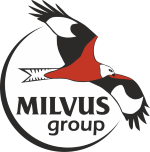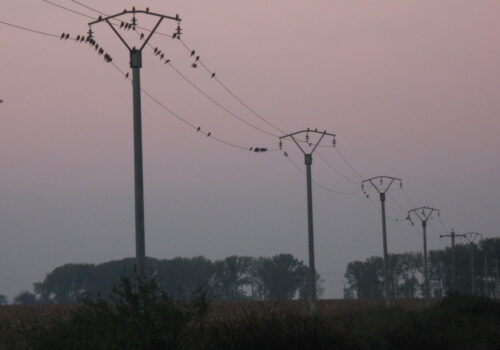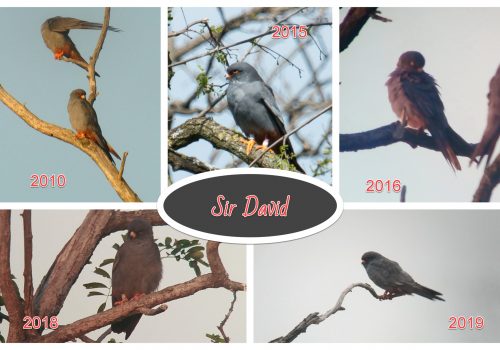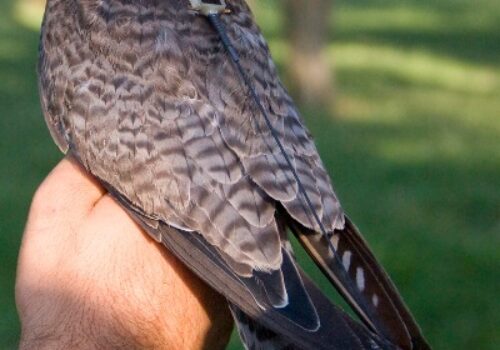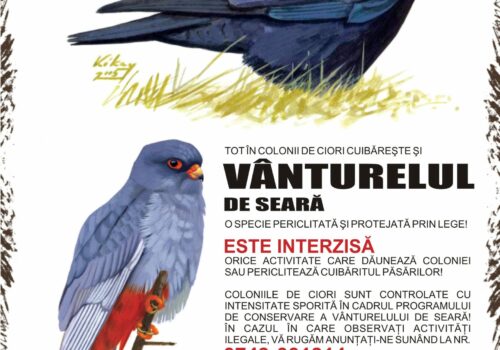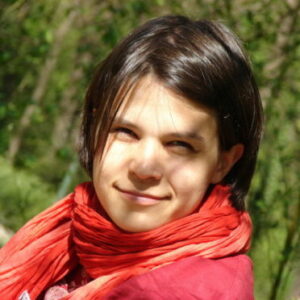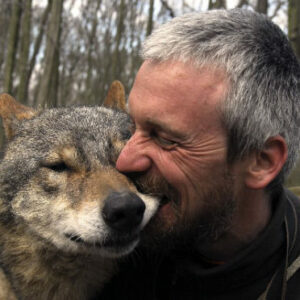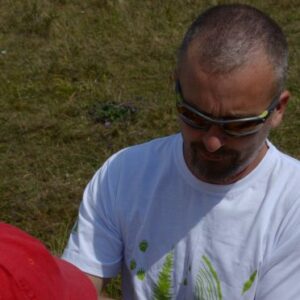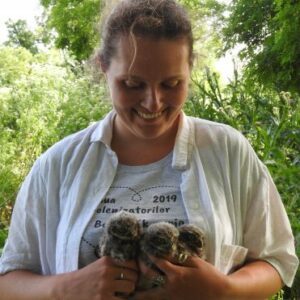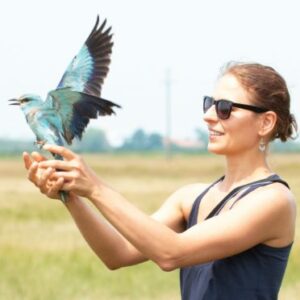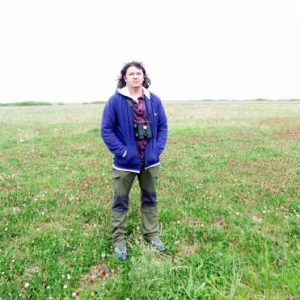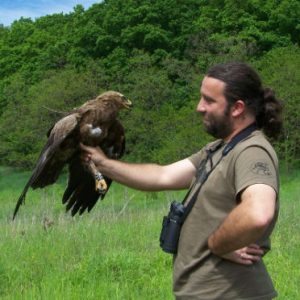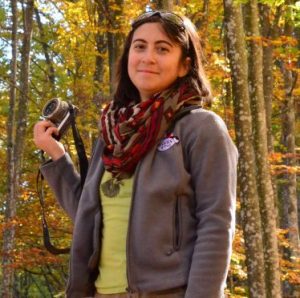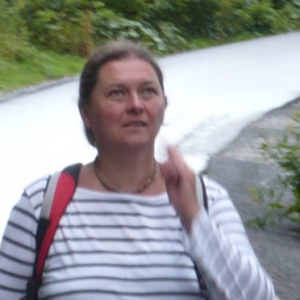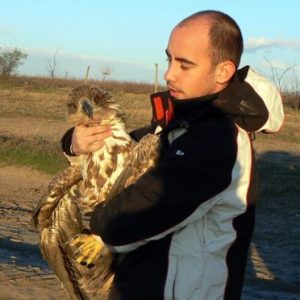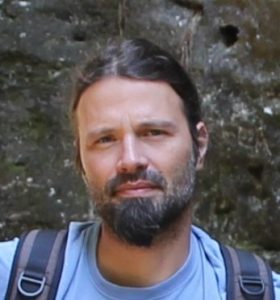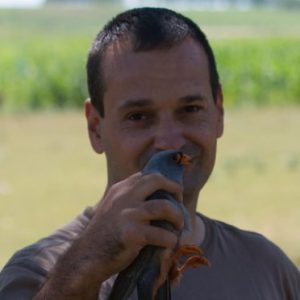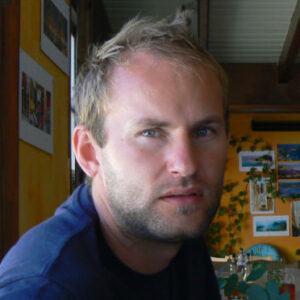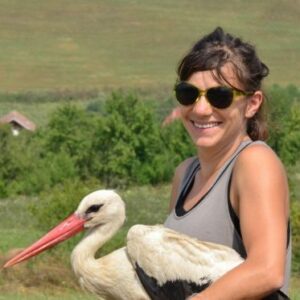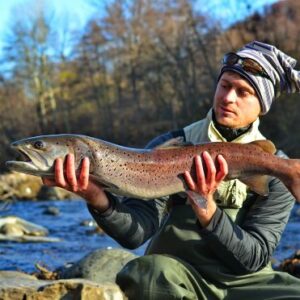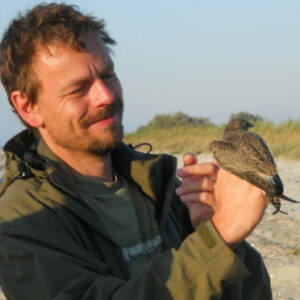 Following their long summer preparing, Red-footed Falcons start their migration in early autumn. On their way to south they roost in flocks of varying numbers (from a few individuals to even more than a thousand) on groups of trees. As they are faithful to their roosting sites, they arrive to these places each autumn. Milvus Group has been conducting Red-footed Falcon counts on roosting sites for several years now. Every week from mid-August until the first week of October synchronous observations are made in the Romanian, Hungarian and Serbian Red-footed Falcon roosting sites. Similarly to past years, this year observations have been made in 6 sites in western Romania (here we would like to thank all those helping us in these observations!).
Following their long summer preparing, Red-footed Falcons start their migration in early autumn. On their way to south they roost in flocks of varying numbers (from a few individuals to even more than a thousand) on groups of trees. As they are faithful to their roosting sites, they arrive to these places each autumn. Milvus Group has been conducting Red-footed Falcon counts on roosting sites for several years now. Every week from mid-August until the first week of October synchronous observations are made in the Romanian, Hungarian and Serbian Red-footed Falcon roosting sites. Similarly to past years, this year observations have been made in 6 sites in western Romania (here we would like to thank all those helping us in these observations!).
Results of the 2014 Red-footed Falcon count on roosting sites: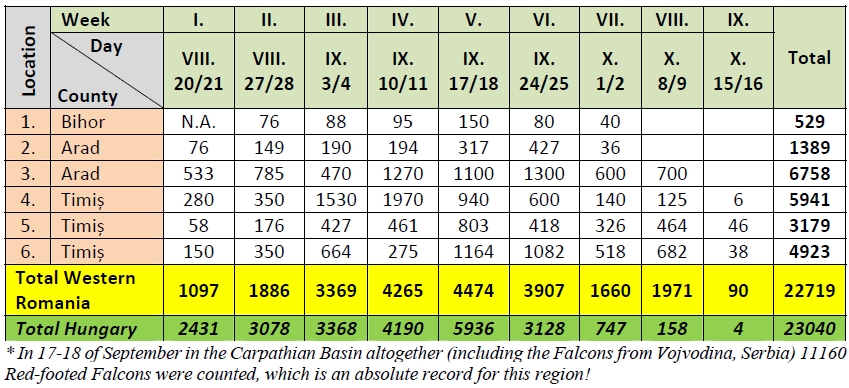
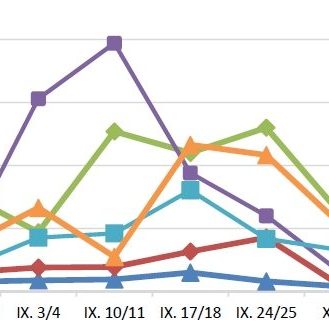

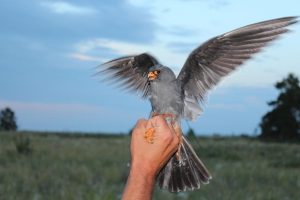 One of the pillars of the Red-footed Falcon conservation programme is questing the routes, the dynamics and the strategy of their migration. Based upon the information we have collected until now, we assume that Red-footed Falcons breeding in eastern sites such as Kazakhstan join the eastern European flocks during migration and they continue their long way together to the African savannahs. For this reason in the beginning of June Red-footed Falcon specialists from the Hungarian Ornithological Society and “Milvus Group” Bird and Nature Protection Association visited the breeding sites from the Kazakh steppes, as part of the “Conservation of the Red-footed Falcon in the Carpathian Basin (LIFE11/NAT/HU/000926)” project, during which they tagged three birds with satellite transmitters. In the middle of September the male bird, Adai, was sending data already from the territory of Romania.
One of the pillars of the Red-footed Falcon conservation programme is questing the routes, the dynamics and the strategy of their migration. Based upon the information we have collected until now, we assume that Red-footed Falcons breeding in eastern sites such as Kazakhstan join the eastern European flocks during migration and they continue their long way together to the African savannahs. For this reason in the beginning of June Red-footed Falcon specialists from the Hungarian Ornithological Society and “Milvus Group” Bird and Nature Protection Association visited the breeding sites from the Kazakh steppes, as part of the “Conservation of the Red-footed Falcon in the Carpathian Basin (LIFE11/NAT/HU/000926)” project, during which they tagged three birds with satellite transmitters. In the middle of September the male bird, Adai, was sending data already from the territory of Romania.
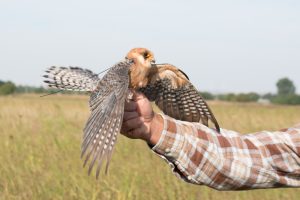 A significant part of Red-footed Falcons which are migrating in the eastern part of Romania are traversing Dobruja and they rest in roosting sites from that area. Since birds from different breeding sites arrive there, specialists from the two organizations tagged three birds with satellite transmitters on a roosting site from the northern part of Dobruja. Three days later the male bird named Ubul and the female bird, Karma were already sending data from the northern part of Bulgaria.
Besides these birds other three falcons were tagged in Hungary and one in Italy.
A significant part of Red-footed Falcons which are migrating in the eastern part of Romania are traversing Dobruja and they rest in roosting sites from that area. Since birds from different breeding sites arrive there, specialists from the two organizations tagged three birds with satellite transmitters on a roosting site from the northern part of Dobruja. Three days later the male bird named Ubul and the female bird, Karma were already sending data from the northern part of Bulgaria.
Besides these birds other three falcons were tagged in Hungary and one in Italy.
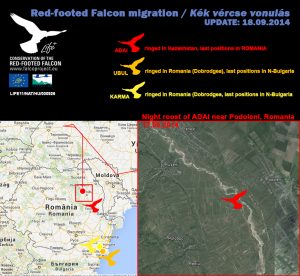 The migration routes of the tagged Red-footed Falcons can be followed on the http://satellitetracking.eu/ page, where hopefully their whole journey to Africa and back will be shown.
With the help of the satellite transmitters, we gather information about the migration of Red-Footed Falcons from both European breeding sites and beyond. The information shows their breeding and wintering areas, as well as the threats the birds face; all of which is necessary for the successful conservation of Red-footed Falcon populations.
All information in this article can be used only with the prior permission of Milvus Group (office@milvus.ro).
The migration routes of the tagged Red-footed Falcons can be followed on the http://satellitetracking.eu/ page, where hopefully their whole journey to Africa and back will be shown.
With the help of the satellite transmitters, we gather information about the migration of Red-Footed Falcons from both European breeding sites and beyond. The information shows their breeding and wintering areas, as well as the threats the birds face; all of which is necessary for the successful conservation of Red-footed Falcon populations.
All information in this article can be used only with the prior permission of Milvus Group (office@milvus.ro).
